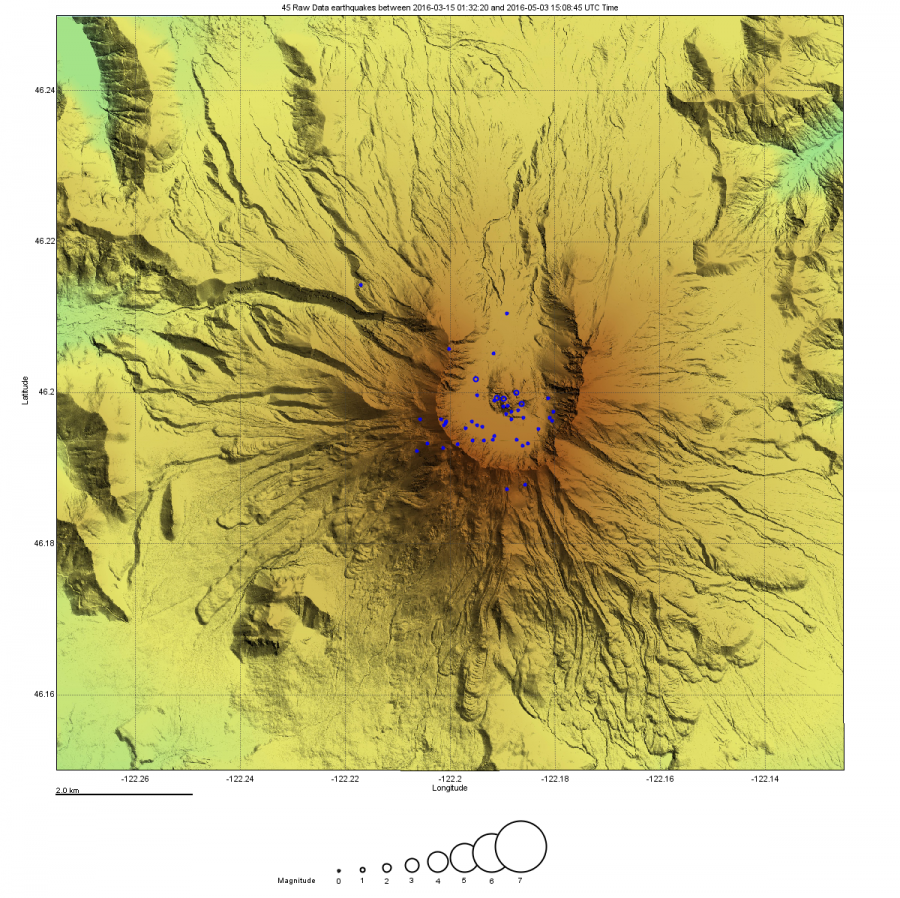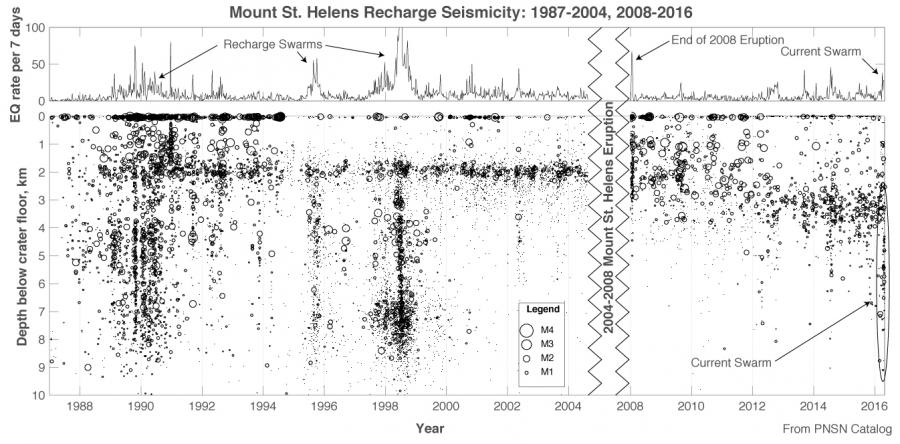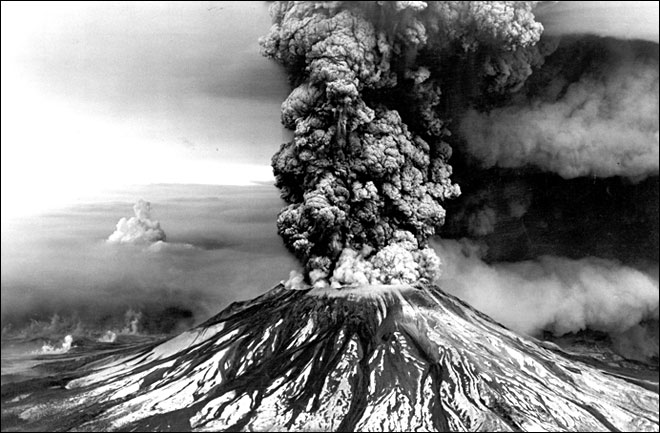Trending right now is Mount St. Helens earthquake swarms.
New eruption brewing or is the Big Girl just taking a breath?

Since the start of 2016, an earthquake swarm has been detected underneath the currently-quiet Washington volcano.
These earthquakes have been occurring from depths of ~2 to over 7 kilometers beneath the volcano.
USGS volcanologists and seismologists are interpreting this swarm as a response to the slow “recharging” for the volcano, where new magma is rising up underneath St. Helens as it slumbers.

As the magma intrudes, it imparts pressure on the rock around it and it heats up water/releases gases that can add to that pressure. This generates small earthquakes as the rocks shift in response to that stress.
Here the note from USGS:
Beginning March 14, 2016, a number of small magnitude earthquakes have occurred beneath Mount St. Helens, at a depth between 2 and 7 km (1.2 to 4 miles). Over the last 8 weeks, there have been over 130 earthquakes formally located by the Pacific Northwest Seismic Network and many more earthquakes too small to be located. The earthquakes have low magnitudes of 0.5 or less; the largest a magnitude 1.3. Earthquake rates have been steadily increasing since March, reaching nearly 40 located earthquakes per week. These earthquakes are too small to be felt at the surface.

The earthquakes are volcano-tectonic in nature, indicative of a slip on a small fault. Such events are commonly seen in active hydrothermal and magmatic systems. The magma chamber is likely imparting its own stresses on the crust around and above it, as the system slowly recharges. The stress drives fluids through cracks, producing the small quakes. The current pattern of seismicity is similar to swarms seen at Mount St. Helens in 2013 and 2014; recharge swarms in the 1990s had much higher earthquake rates and energy release.
No anomalous gases, increases in ground inflation or shallow seismicity have been detected with this swarm, and there are no signs of an imminent eruption. As was observed at Mount St. Helens between 1987-2004, recharge can continue for many years beneath a volcano without an eruption.
This is how it could look like if it would really erupt again:
With the worldwide volcanic and seismic unrest recorded this last month, can we really believe that?
Is a new eruption brewing or is the Big Girl just taking a breath?












[…] And all the Cascade volcanoes seem to be very active… Mount St. Helens was recently hit by about 130 tremors in a matter of weeks. […]
[…] In the last 1,500 years, Mount Hood has had two major eruptive periods that produced lava domes, pyroclastic flows and mud flows, and minor ash fallout. The most recent major eruptive period began in 1780 and lasted for one to two decades. And all the Cascade volcanoes seem to be very active… Mount St. Helens was recently hit by about 130 tremors in a matter of weeks. […]